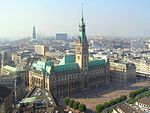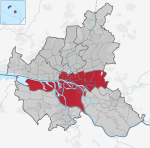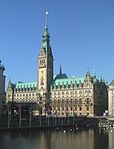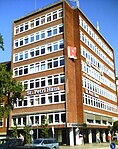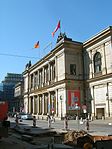Bombing of Hamburg in World War II

The Allied bombing of Hamburg during World War II included numerous attacks on civilians and civic infrastructure. As a large city and industrial centre, Hamburg's shipyards, U-boat pens, and the Hamburg-Harburg area oil refineries were attacked throughout the war.As part of a sustained campaign of strategic bombing during World War II, the attack during the last week of July 1943, code named Operation Gomorrah, created one of the largest firestorms raised by the Royal Air Force and United States Army Air Forces in World War II, killing an estimated 37,000 people in Hamburg, wounding 180,000 more, and destroying 60% of the city's houses.Hamburg was selected as a target because it was considered particularly susceptible to attack with incendiaries, which, from the experience of the Blitz, were known to inflict more damage than just high explosive bombs. Hamburg also contained a high number of targets supporting the German war effort and was relatively easy for navigators to find. Careful research was done on behalf of both the RAF and USAAF to discover the optimum mix of high explosives and incendiaries. Before the development of the firestorm in Hamburg, there had been no rain for some time and everything was very dry. The unusually warm weather and good conditions ensured that the bombing was highly concentrated around the intended targets, and helped the resulting conflagration create a vortex and whirling updraft of super-heated air which became a 460-metre-high (1,510 ft) tornado of fire. Various other previously used techniques and devices were instrumental as well, such as area bombing, Pathfinders, and H2S radar, which came together to work with particular effectiveness. An early form of chaff, code named 'Window', was successfully used for the first time by the RAF – clouds of aluminium foil strips dropped by Pathfinders as well as the initial bomber stream – in order to completely cloud German radar. The raids inflicted severe damage to German armaments production in Hamburg.
Excerpt from the Wikipedia article Bombing of Hamburg in World War II (License: CC BY-SA 3.0, Authors, Images).Bombing of Hamburg in World War II
City Hall Marketplace, Hamburg Altstadt
Geographical coordinates (GPS) Address Nearby Places Show on map
Geographical coordinates (GPS)
| Latitude | Longitude |
|---|---|
| N 53.550833333333 ° | E 9.9936111111111 ° |
Address
City Hall Marketplace 7
20095 Hamburg, Altstadt
Germany
Open on Google Maps


